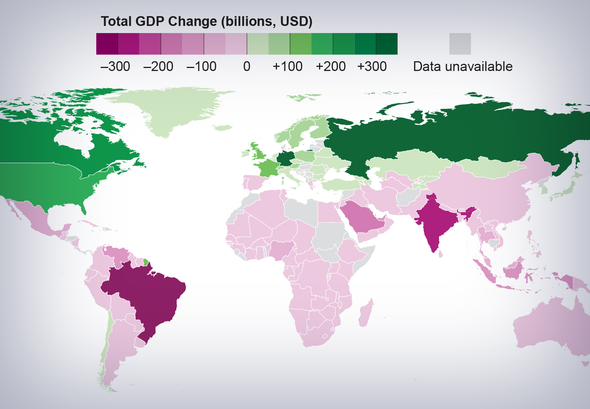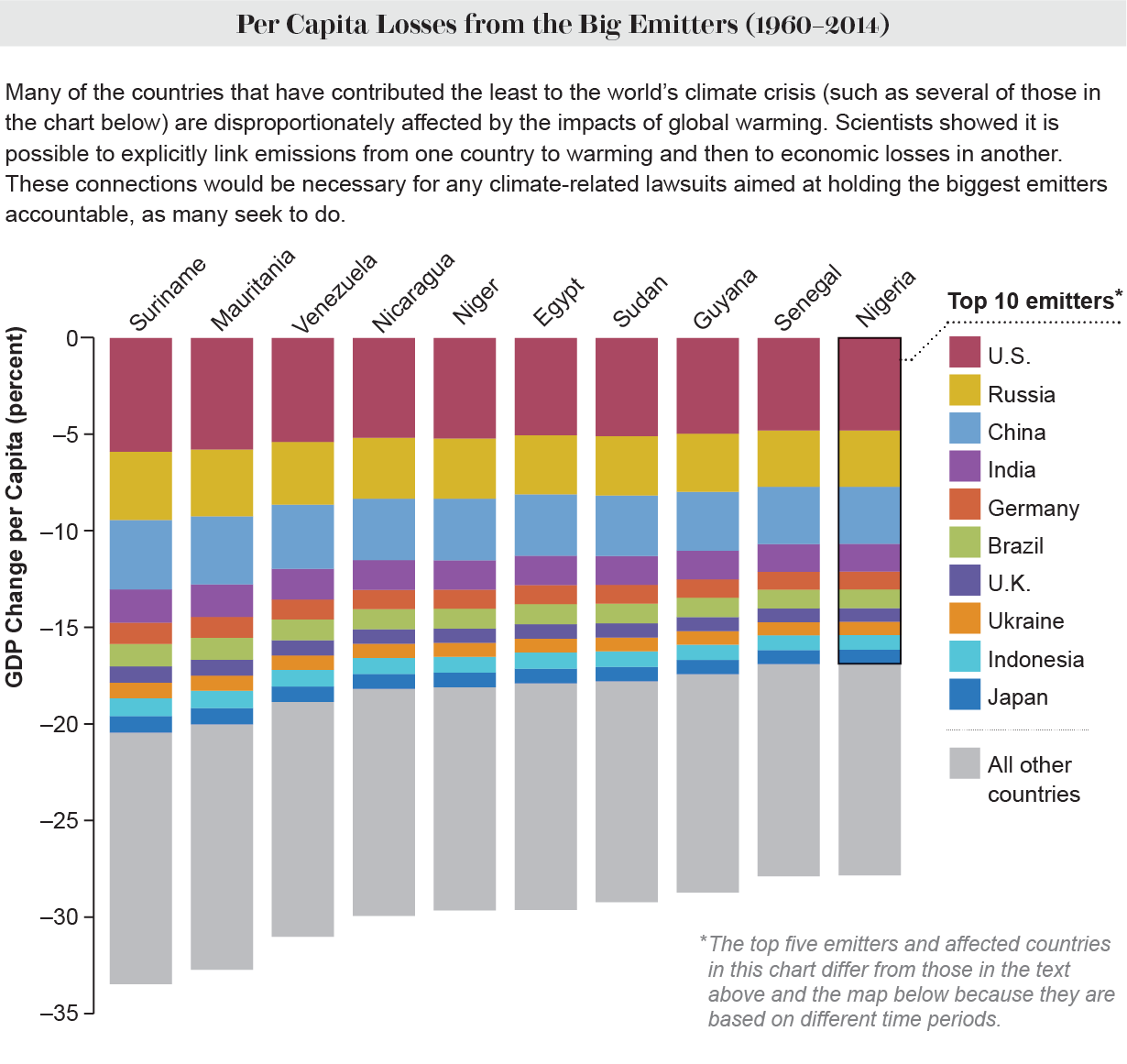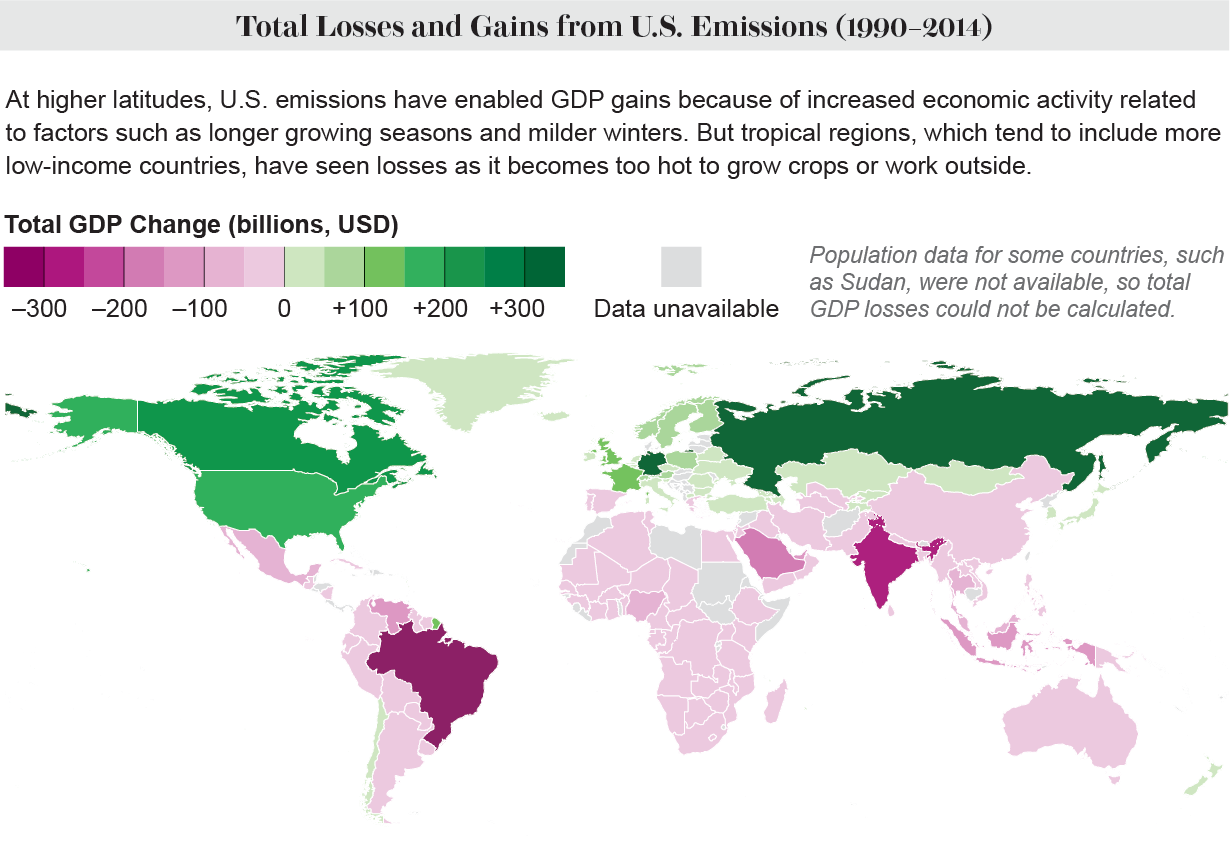Low-income nations bear the brunt of costs from climate change

The top five greenhouse gas–emitting nations—the U.S., China, Russia, Brazil and India—collectively caused $6 trillion in global economic losses between 1990 and 2014, according to a recent study of available data. And those losses haven’t been felt equally. Dartmouth College climate scientists Christopher W. Callahan and Justin S. Mankin used climate models to determine how much of the planet’s warming could be attributed to each country’s emissions and calculated what those emissions have cost every other country. The scientists linked global average temperature rise to the warming in each nation (because some parts of the world are warming faster than others) and then to the associated change in that country’s gross domestic product. “A striking feature of the results was the compounding inequalities,” Callahan says. Whereas wealthier countries burned more fossil fuels to drive economic growth, low-income countries—which are already less able to adapt to a changing climate—bore the brunt of the losses.


This article was originally published with the title “The Cost of Climate Change” in Scientific American 327, 5, 88 (November 2022)
doi:10.1038/scientificamerican1122-88


